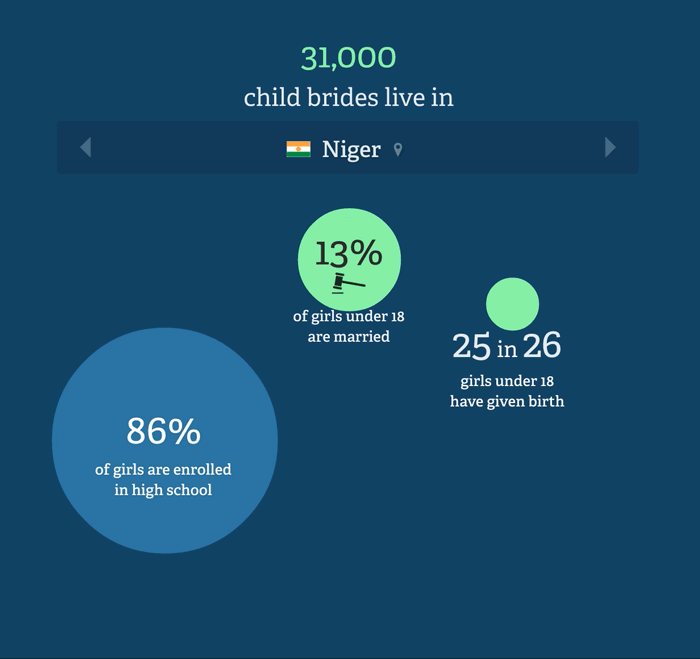


Although laws often prohibit the practice, child marriage is still widespread in many developing nations. The legal minimum age of marriage in India is 18 years old, but 47% of girls—or an astounding 25.9 million—are married before their 18th birthday. That means roughly one in two women in India recited their nuptials before graduating from high school, and in too many cases, even before graduating elementary school.
Though legislation helps curtail the numbers, laws are often disregarded or ineffectual in eliminating the practice. Further, in some countries circumstances like parental consent, religious custom, or court approval allow girls to marry at a younger age than boys.
In cases of child marriage, young girls are typically taken from their families and married to older men. As a result they are often forced to stop their schooling and instead work for the family of their new spouse. Their education—as well as their childhood—is cut short.

High rates of teenage pregnancy are also common in places where child marriage is prevalent. Girls must often bear children before they are physically, emotionally, or financially prepared to do so. In Niger, where there is no minimum legal age of marriage, one in five girls under 18 have given birth—which is higher than the percent of girls enrolled in secondary school (i.e. in a given year, more girls under 18 have given birth than enrolled in high school).
The visualization allows users to compare rates of child marriage, secondary school enrollment, and adolescent pregnancy across countries. For a more human account of the story, see the incredible video made by media partners, Scratch, about girls in India who are taking a stand against child marriage.
Visit the site to explore the pervasive impacts of child marriage around the world, and to watch the short video featuring women who are taking control of their own futures.
We’d love to hear what you’re working on, what you’re curious about, and what messy data problems we can help you solve. Drop us a line at hello@fathom.info, or you can subscribe to our newsletter for updates.